The Williamsons’ garden north of Johannesburg is filled with indigenous plants that merge into a borrowed view of the Magaliesberg
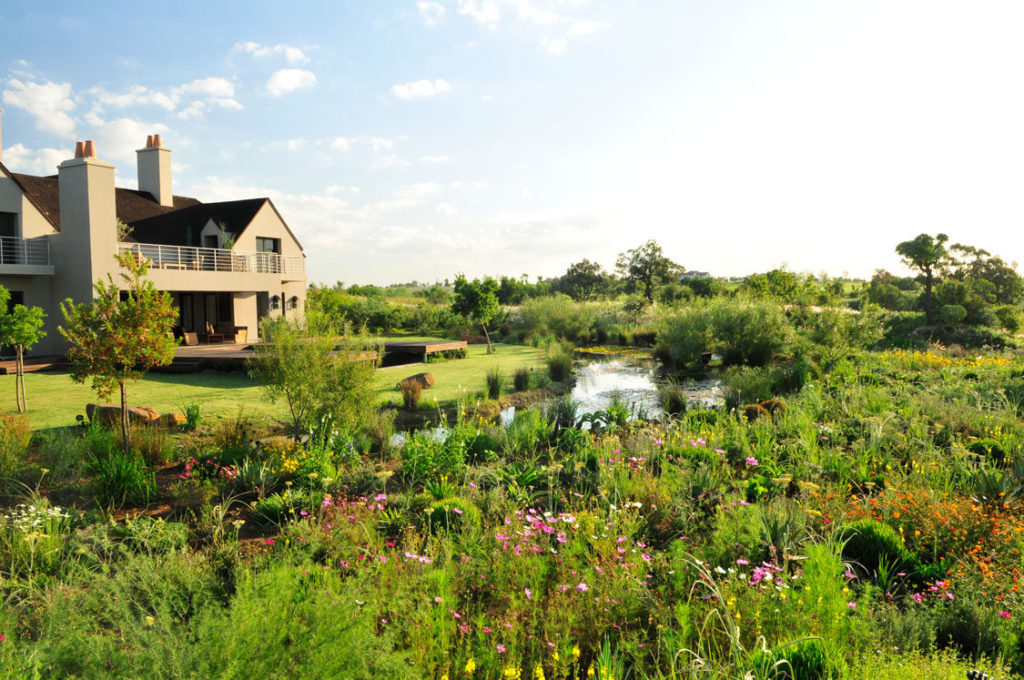
Set at a high point in an estate, the Williamsons’ garden is filled with drifts of indigenous meadow-like plantings bordering on a man-made ‘river’.
When you have the Magaliesberg as a backdrop and warthog, buck, wildebeest, caracal and jackal on your doorstep, the wisest course of action is to create a natural environment that embraces the wild. The Williamsons’ garden at Blair Atholl near Lanseria captures the very essence of nature in this riverine golf estate where suburbia meets countryside in the most unifying way.
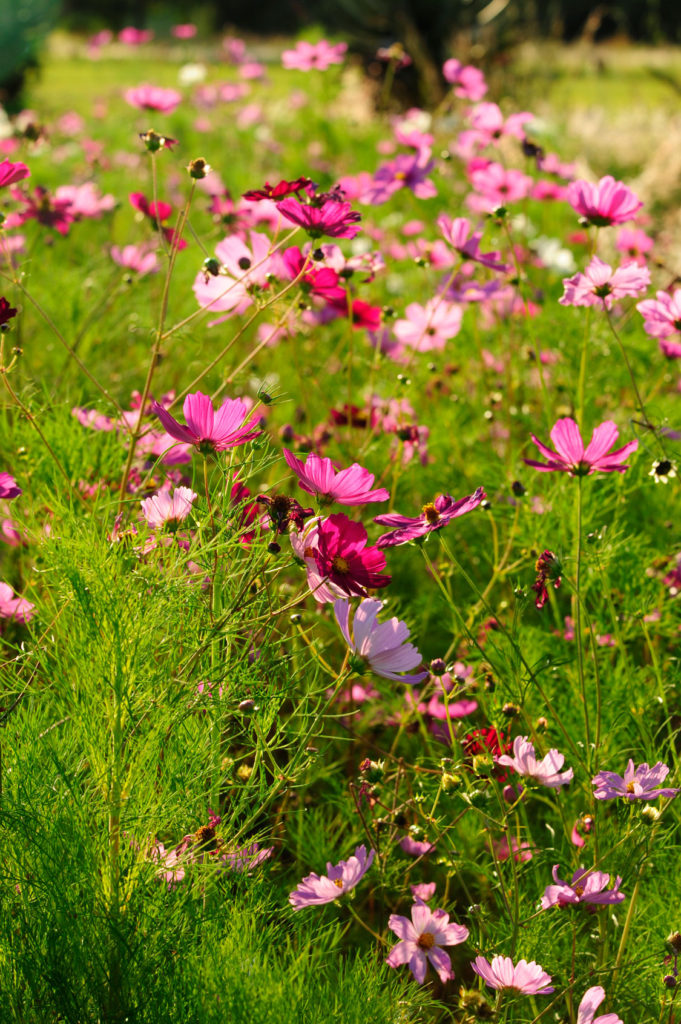
Cosmos has seeded itself in the garden.
The garden is mainly indigenous, planted up with a selection of plants endemic to the area.
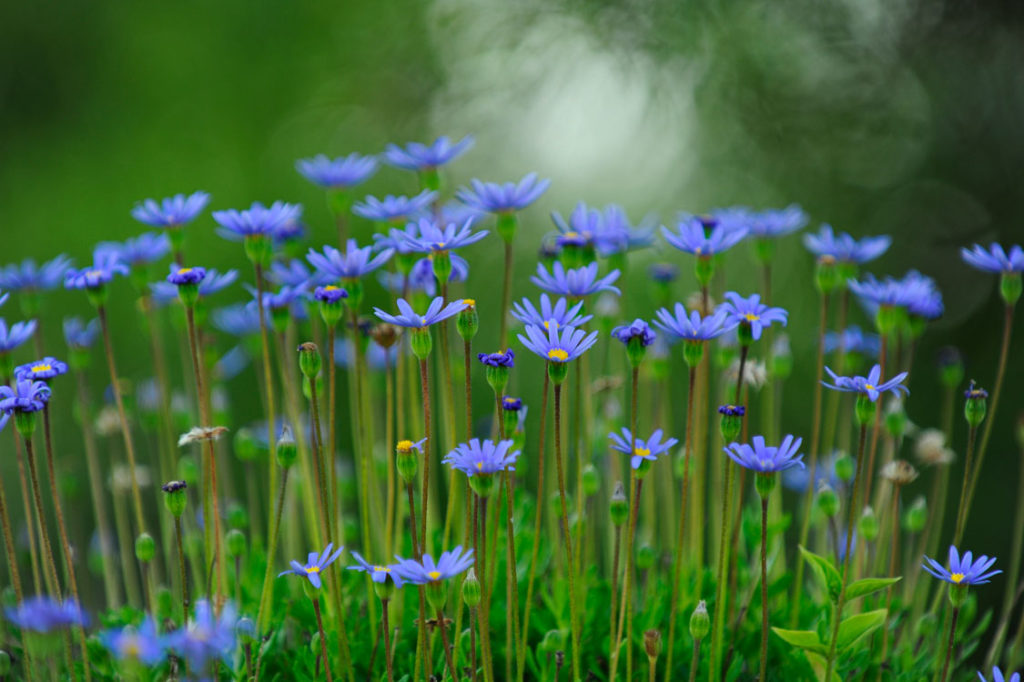
Felicia add a splash of blue to the meadow-like plantings.
From the patio, two wooden decks stretch out on either side of a dark-bottomed rim-flow pool providing fabulous vantage points over the area and the distant mountains. These decks drop down to the lawn, which is indigenous kweek, dotted with trees and strategically-placed rocks to give an authentic feel.
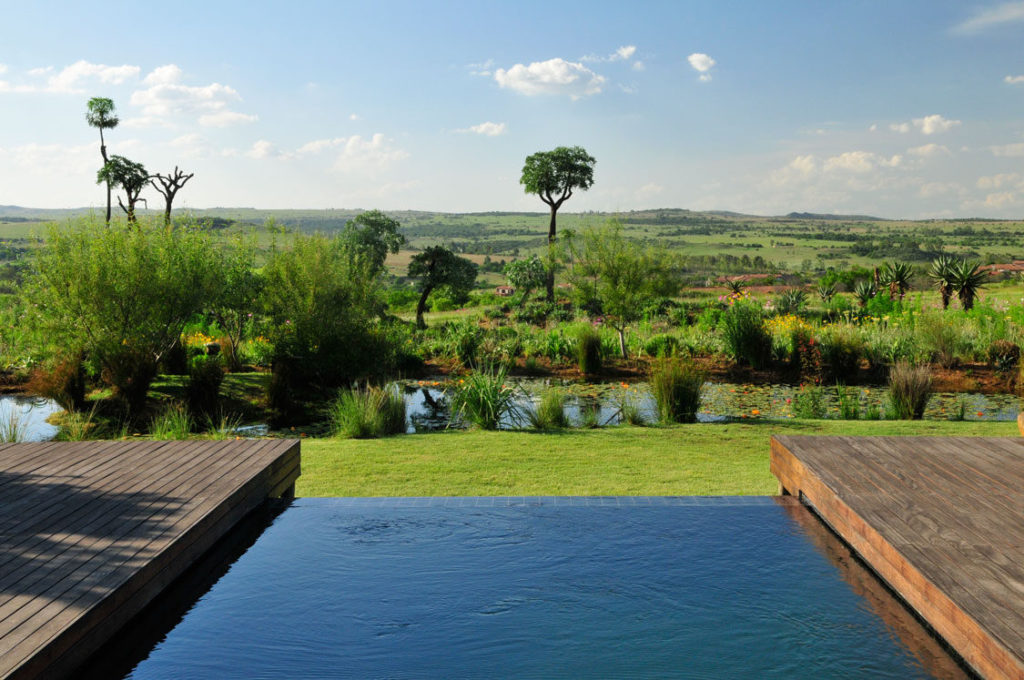
The rim-flow pool drops off into the indigenous garden, which blends with the expansive view.
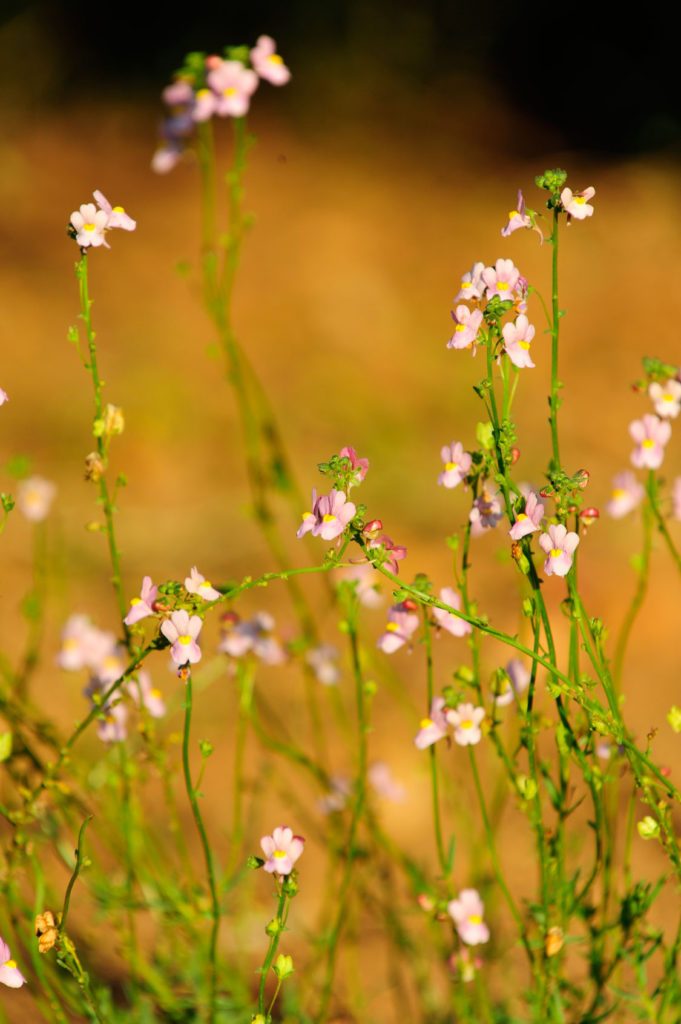
Nemesia capensis.
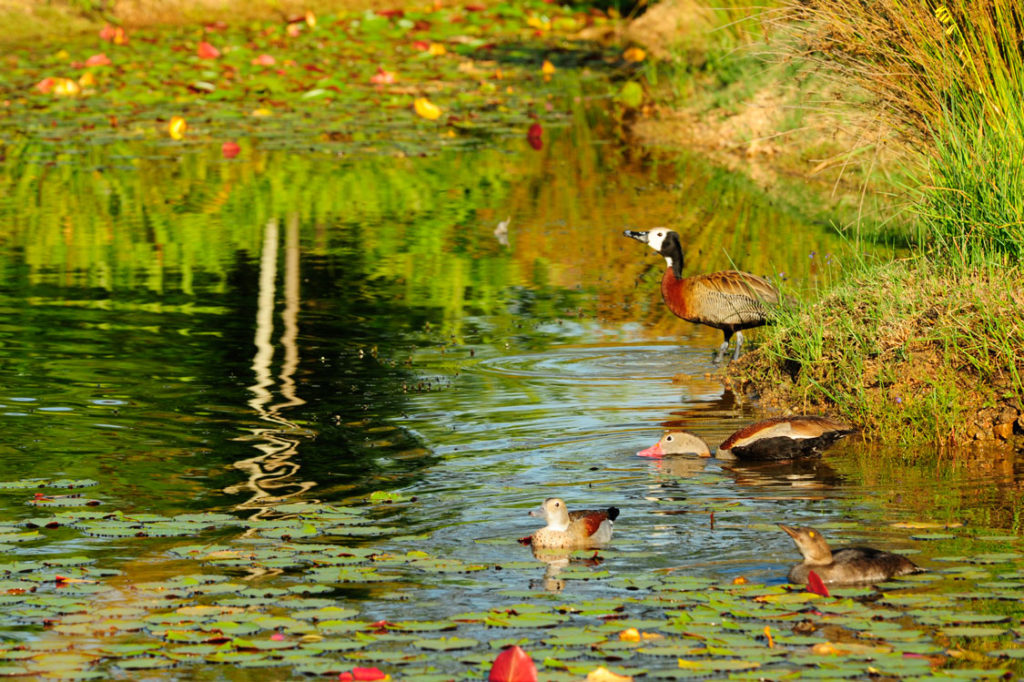
Pygmy geese enjoy the ‘river’.
On the far bank of the ‘river’, a combination of many indigenous species presents a lush picture in summer, while in winter, the garden takes on the golden hues characteristic of the Highveld.
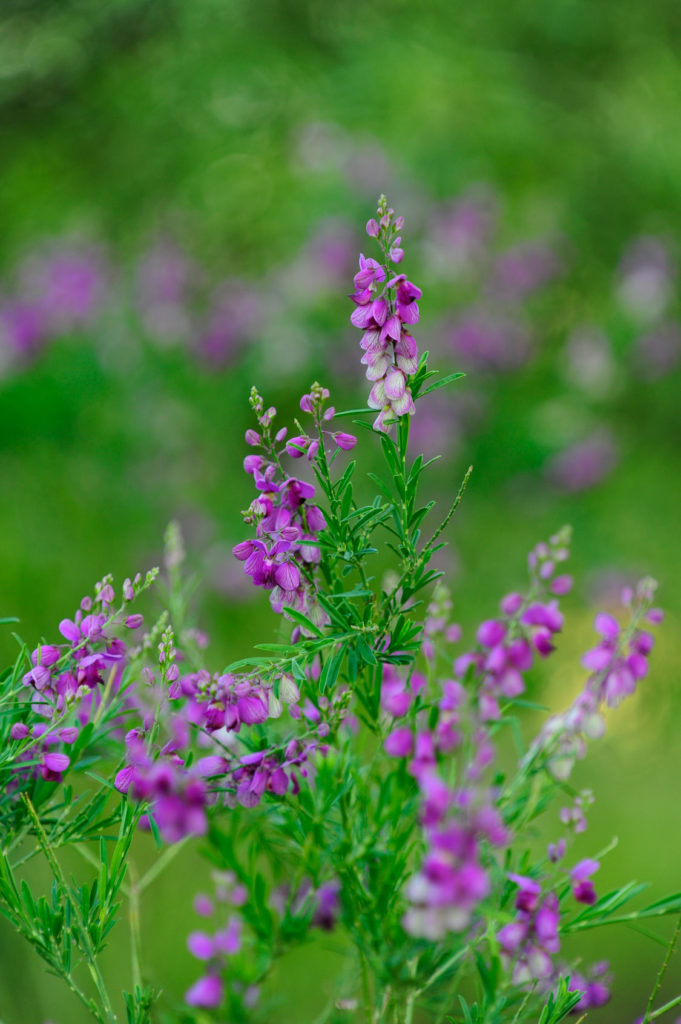
Polygala myrtifolia.
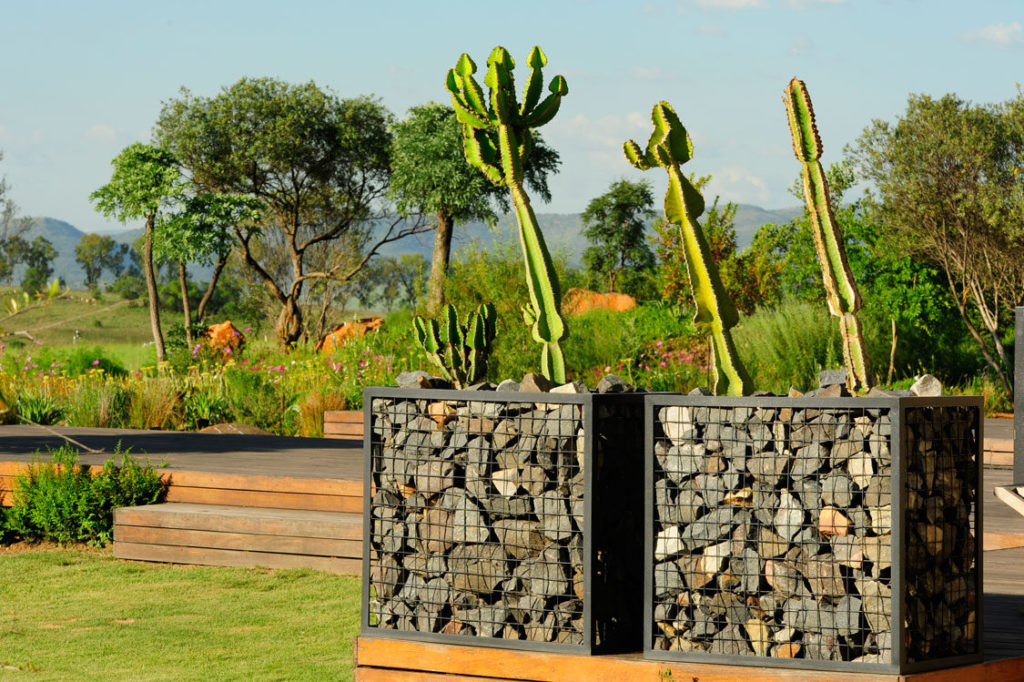
The succulent stems of Euphorbia cooperi rise out of gabion-like containers filled with stones.
The idea was for the garden to be an indigenous meadow, with Aloe marlothii and cassia used as backdrop plants. Plants such as felicia, lessertia, dicoma, pelargonium, euphorbia, gladiolus and watsonia add colour in spring and summer. There are probably 250 plant species in the garden, which is looking fantastic, but will take years to develop as collecting special species takes time.
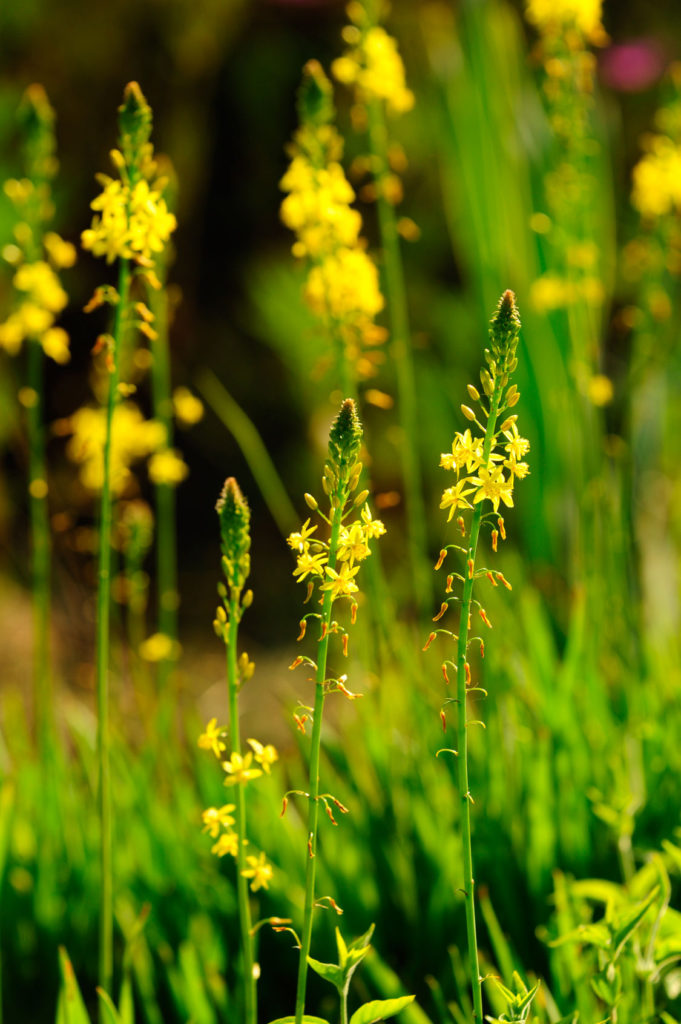
Drought-resistant Bulbine frutescens.
Although this is a farm-style, indigenous garden, its slightly stylised design will keep it in check and prevent it becoming too wild and bushy.
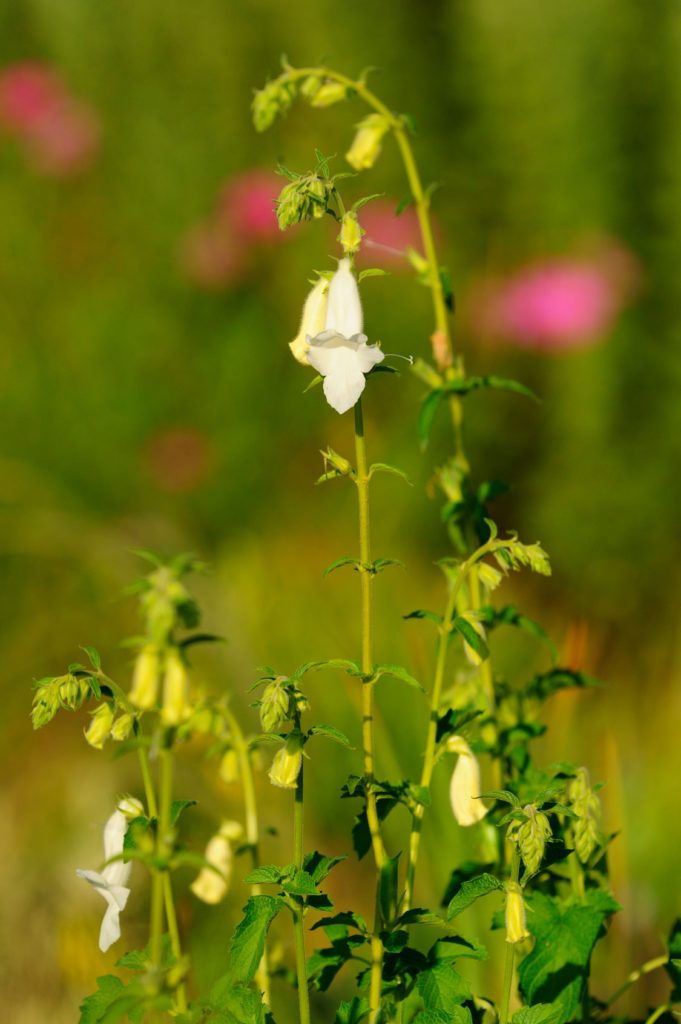
The tall stems of wild foxgloves (Ceratotheca triloba) attract bees.
